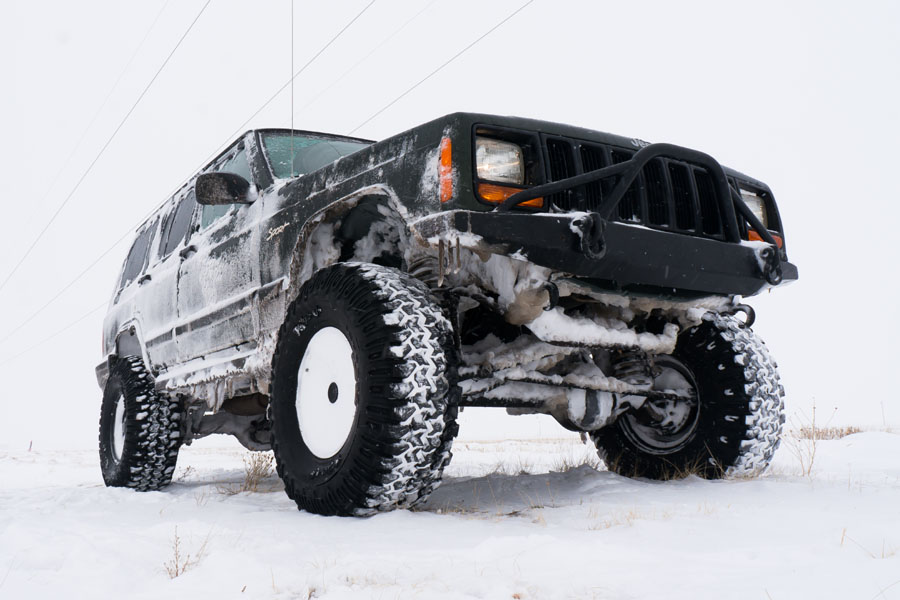Classic Cars: The Business of Driving in the Snow

No one drove four-wheel drive cars when I grew up. In fact, the only company that made a 4WD vehicle was Willys Jeep, which produced a rather crude civilian version of a WWII army Jeep. Most people made do with large, heavy rear-wheel drive American cars with stick shifts. When it snowed, everyone knew the tricks of how to go in the snow.
The big winners in the snow were the cars that had snow tires on their rear wheels. True die-hards slapped chains around their rear wheels. Oh, and what a relief it was to drive with snow chains in heavy snow. However, they made a terrific racket, with a clanging that sounded like something bad was about to happen beneath your car, especially on concrete. Also, you had to be insane to drive faster than 40 miles per hour with chains. That was the state-of-the-art of driving on packed snow in those days.
Drivers have to have some old-fashioned respect for snow on the highways, especially if you think ice could be lurking under the white stuff. I have vivid memories of sliding about 200 feet in my 1954 Jaguar XK120MC coupe, feeling like a passenger and not the driver as it slid in slow motion into a Buick. I was just a clueless college kid who didn’t know about ice hiding under snow. Another time I was driving in a blinding and blowing snowstorm in Vermont at night in my Citroen ID 19 when I blasted through a truck-high snow drift blocking the road. When I finally stopped my sliding, unique-shaped French car and looked back, I was stunned to see a perfect silhouette of the Citroen cut out through the 10 foot high snow drift. Lesson learned. Look out for snow drifts, especially in the dark, and vive la France.
Today, everything is different. When I’m driving in the snow I see SUVs of all types driving past me at speeds that were impossibly dangerous years ago. I quietly wonder if the total lack of respect for snow conditions and the false security of four-wheel drive has actually made winter driving more perilous. Do folks realize that even though four-wheel drive vehicles go much better in the snow than they did years ago, they do not stop any better? In fact, they may not stop as well because they are heavier. True, ABS brakes help, but don’t help that much when ice is hanging around to ruin your day.
Years ago, when the original US Army Hummer was introduced for sale in the United States, AM General lent me a new Hummer for a week to use in the Hamptons. It was in the middle of a snow-covered winter and I was delighted to have use of this beast of a motor vehicle. I felt like General Patton, driving this diesel powered dreadnaught. The funny thing that I discovered about the Hummer is that it wasn’t very good in the snow. It was skittish. I felt perhaps the suspension was too stiff, and then realized it was probably designed to go in soft desert sand, and not wet slippery stuff. Lesson learned; don’t judge a book by its cover. Here was the most accomplished-looking SUV in the world, which was a wallflower when it came time to go in the snow. Beware, the same can be said for many SUVs when the white stuff gets seriously angry.



